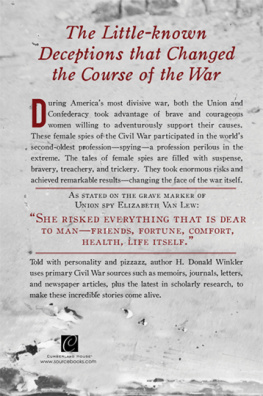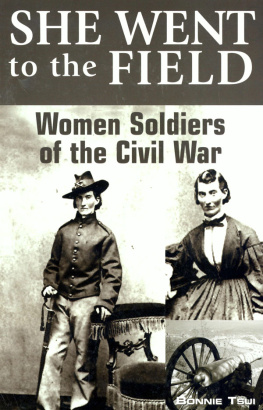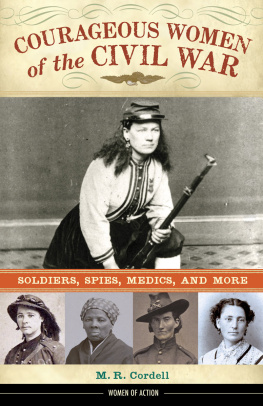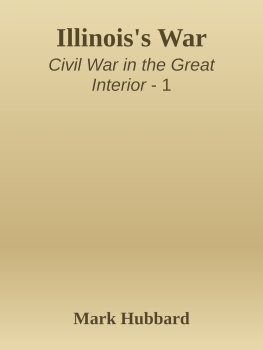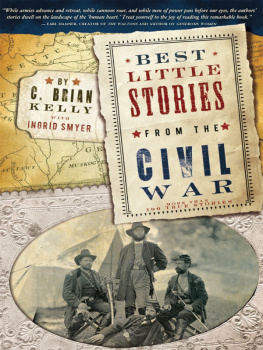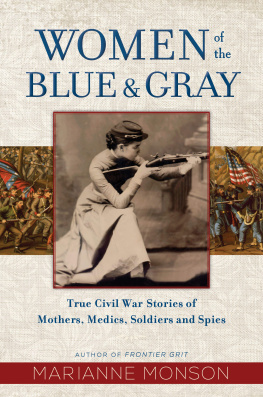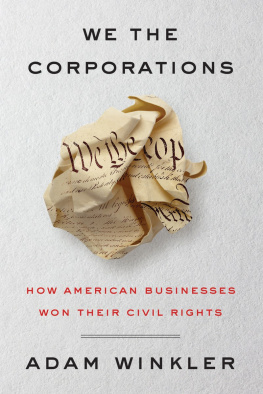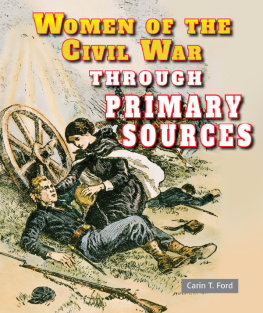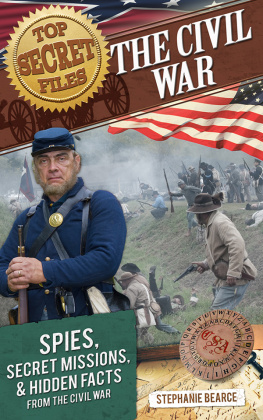
Copyright 2010 by H. Donald Winkler
Cover and internal design 2010 by Sourcebooks, Inc.
Cover design by William Riley/Sourcebooks
Cover image courtesy of the Brady-Handy Collection, Library of Congress Prints and
Photographs Division.
Sourcebooks and the colophon are registered trademarks of Sourcebooks, Inc.
All rights reserved. No part of this book may be reproduced in any form or by any electronic or mechanical means including information storage and retrieval systems except in the case of brief quotations embodied in critical articles or reviewswithout permission in writing from its publisher, Sourcebooks, Inc.
This publication is designed to provide accurate and authoritative information in regard to the subject matter covered. It is sold with the understanding that the publisher is not engaged in rendering legal, accounting, or other professional service. If legal advice or other expert assistance is required, the services of a competent professional person should be sought.From a Declaration of Principles Jointly Adopted by a Committee of the American Bar Association and a Committee of Publishers and Associations
Published by Cumberland House, an imprint of Sourcebooks, Inc.
P.O. Box 4410, Naperville, Illinois 60567-4410
(630) 961-3900
Fax: (630) 961-2168
www.sourcebooks.com
Library of Congress Cataloging-in-Publication Data
Winkler, H. Donald
Stealing secrets : how a few daring women deceived generals, impacted battles, and altered the course of the civil war / by H. Donald Winkler.
p. cm.
Includes bibliographical references and index.
1. United StatesHistoryCivil War, 1861-1865Participation, Female. 2. United StatesHistoryCivil War, 1861-1865Women. 3. United StatesHistoryCivil War, 1861-1865Secret service. 4. United StatesHistoryCivil War, 1861-1865Biography. 5. Women spiesUnited StatesBiography. 6. Women spiesConfederate States of AmericaBiography. I. Title.
E628.W57 2010
973.7082dc22
2010025638
Printed and bound in the United States of America.
VP 10 9 8 7 6 5 4 3 2 1
To my friend
Robert T. Redd ,
a Virginia gentleman
and a beloved educator
For a spying enterprise that requires real finesse, a woman will be likely to accomplish far more than a man. She is quicker-witted, less easily imposed upon, and can more easily deceive other people.
Loreta Velazquez, Confederate Spy
CONTENTS
ACKNOWLEDGMENTS
I am indebted to a number of individuals and institutions for hard-to-find information about and photographs of several spies featured in this book.
The chapter on Antonia Ford and Laura Ratcliffe could not have been written without the assistance of Karla and Charles W. Vernon III of Vienna, Virginia; Susan Inskeep Gray, curator and visitor services manager for the Fairfax Museum and Visitor Center; and Bill Etue, a Civil War tour guide. Mrs. Vernon studied the life of Antonia Ford intensely for a year and coproduced the 2009 docudrama, Spies in Crinoline. She provided me with magazine articles and news clippings, information from the Willard Family Papers at the Library of Congress and from the City of Fairfax Historic Collection, and Civil Warera photographs of Antonia Ford, Joseph Willard, the Willard Hotel, the original Fairfax Courthouse, and the Gunnell House, among others. Her husband, Charles, shared his expertise of Washington divorce law in the 1860s and his recent discovery of adultery charges against Joseph Clapp Willard, the man Antonia married.
Thanks, too, to Charles V. Mauro, for permission to reproduce his photograph of the cover page of the album that Jeb Stuart gave to Laura Ratcliffe, and to photographer Susan Bock at www.art2die4.net for her tinted photograph of Jeb Stuart.
For information on Lottie and Ginnie Moon, I thank Valerie E. Elliott, head of the Smith Library of Regional History in Oxford, Ohio, the hometown of the Moon family. She also provided rare photographs of the Moon sisters and of the Oxford Female Institute.
For material on Nancy Hart, I am grateful to Terry Lowry, historian of the West Virginia State Archives and History Library, who provided numerous newspaper and magazine clippings.
For the excellent photograph of the dining room at the Confederate White House, I am indebted to Ann Drury Wellford, manager of photographic services for the Museum of the Confederacy, and photographer Katherine Wetzel.
No spies were more difficult to document than Olivia Floyd and Sarah Slater. And no one could have exceeded the helpfulness given to me by two special ladies: Anita Warnes, circulation manager of the Library of the College of Southern Maryland at La Plata, and Sheila R. Smith of the Society for the Restoration of Port Tobacco. Ms. Warnes provided copies of two lengthy articles written by historian James O. Hall for the Maryland Independent in 1975 and extensive information from the files of the Southern Maryland Studies Center and the Historical Society of Charles County (the latter with the assistance of its president, Joyce B. Candland). Ms. Smith mailed to me a never-before-published photograph of young Olivia Floyd and other materials that answered several questions I had about her. Two other photographs for the chapter about Olivia came from A. J. McDonald, director of the St. Albans Museum in Vermont.
To all of the above, I am deeply appreciative of their willingness to go far beyond the call of duty to respond to my numerous questions and requests.
Special thanks also go to Betty Webb of the Anna Porter Public Library in Gatlinburg, Tennessee. She provided scores of books through the interlibrary loan program, including some that were more than a hundred years old.
Finally, I would be remiss if I did not thank my wife, Azile, for always being available when I needed her help and advice. She has been my best critic and my staunchest supporter.
INTRODUCTION
T he stories of women spies are filled with suspense and seduction, treachery and trickery, romance and bravery. Women took enormous risks and achieved remarkable resultsoften in ways men could not. A quiet Quaker schoolteacher reported information to a Union commander that led to an important victory. Two women provided intelligence that prevented Confederates from breaking the Northern blockade of Southern ports. A teenage girl rushed intelligence to a marching army. Those with social connections invited enemy officers to parties where loose lips let slip critical information. Others galloped on horseback through enemy lines with information concealed in their bodices. They used disguises. They created ciphers. They intercepted military dispatches. They carried secret messages, medicines, and supplies on the rings of steel wires that puffed out a hoop skirt. And they provided accurate information about the enemys fortifications, plans, troop size, and movements.
But the most potent tools in their arsenals were physical charms, flirtations, and the powers of feminine persuasion.
A twenty-three-year-old lady cultivated a sweet and subdued voice and hired a phrenologist to help enhance her ability to win friends and influence powerful figures. Spies charmed cabinet-level secrets out of lovesick admirers and bewitched countless officers. Allan Pinkerton, head of the Union Intelligence Service, wrote of the almost irresistible seductive powers of Confederate spymaster Rose Greenhow, a widowed mother of four. Pinkerton said that her forceful, compelling style and abiding attractiveness to men were the underpinnings of her success. They made her an extremely dangerous enemy of the Federal government.
Next page
